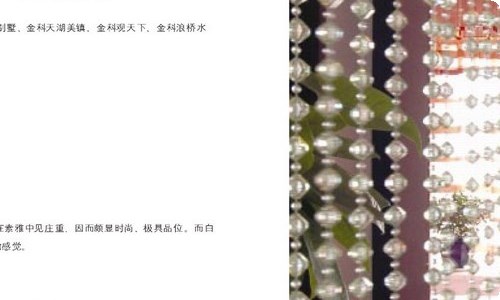
英语教案 Wish you were here教案
第一部分:将来进行时
Translate the following sentences:
(1)Don’t call me between 9:00 and 11:00 tomorrow morning. I will be taking an exam then. 明天9点至11点期间,不要给我打电话,那时我将要参加。
(2)I shall be doing housework all day this Saturday.本周六一整天我将都在做家务。
(3)At 9:00 this evening I will be watching the news programs on TV. 今晚九点钟,我将正在电视上看节目。
(4)At this time tomorrow we’ll be having a maths lesson.
明天的这个时候我们正在上课.
(5)What will you be doing at five tomorrow afternoon? .明天下午五点钟你打算做什么?
(6)Be sure to come. We’ll be expecting you. 一定要来, 我们要等你的.
Rules:
一. 将来进行时构成:will/shall be doing
二. 主要用法:
1.表示将来某一段时间内持续做的动作。如 1,2
2. 表示将来某个时刻正在发生的动作。如 3,4
3. 表示预计即将发生或势必要发生的动作。如 6
4. 表示委婉地询问对方或别人计划要做的事。如 5
三、将来进行时与一般将来时的比较:
Choose the best answer:
1. --I thought I asked you to fix the radio.
--Oh, I am sorry. Mother, I______ it right now.
A . will be doing B. will do C. was about to do D. am going to do
解答:B。根据上下文语境,这不是计划好或打算要做事情,而侧重于指“意愿”,故选用will do形式。
2. We ____ dinner at seven o’clock when CCTV ____ to broadcast news.
A. are having, will start B. will be having, starts
C. will have, will start D. are going to have starts
解答:B。句意为“七点钟当中央电视台台播新闻时,我们可能正在吃饭”。
B 3. --- _______ you ________ your car this time tomorrow? My car is broken. Can I borrow yours to pick up a friend at the airport?
--- You can take it. I ________ at home tomorrow watching TV.
A. Will, be using; have been staying B. Will, be using; will be staying
C. Have ,been using; have been staying D. Have, used; will be staying
Rules:
1. 一般将来时侧重主观意愿,而将来进行时则强调动作的进行。
I’ll work on this tomorrow.(表示意愿或许诺)
I’ll be working on this tomorrow.(纯粹表示将来要发生的动作)
2. 将来进行时比一般将来时在语气上更委婉客气。
比较:When will you finish these letters? (只是问一个将来的事实)
When will you be seeing Mr. White?(语气较委婉)
第二部分:过去将来时
Translate the following sentences .
1. He said he would go to the north for the holiday. 他说他将去北方去度假。
2.They wanted to know when you would finish the article.他们想知道什么时候你会完成这篇文章。
3. I thought he wouldn’t attend that evening party, but to our surprise he came. 我以为他不会参加那个晚会,但是令我们惊奇的是,他来了。
Rules:
过去将来时构成: would/should +do
表示从过去某个时间看将要发生的动作或存在的状态。用于间接引语或宾语从中,当主句谓语动词用过去时态时。
注意:过去将来还可用下列形式来表达,但含义有所不同:
1. was/were going to do: 表示过去的主观打算。但未必能实现。
1). We were going to leave, but then it rained.我们正打算离开,但这时下雨了。
2). I was going to visit the factory but in the end I went to the country. 我当时打算去参观工厂的,但最终我去乡下了。
2. was /were about to do:即将发生的动作“刚要/正要做某事”,不能再与时间状语连用。
I was about to sit down when the telephone rang.我正要坐下这时电话响了。
3. start, go ,come, leave;see, meet类动词的过去进行时:表示就过去某一时刻而言即将发生的动作
1). I didn’t know that they were ……此处隐藏4779个字……成如此伟大的工作呢?
四、It is +被强调部分+that…强调句型。
英语中,It is +被强调部分+that…这种强调句型用来突出句子的某一个部分,在意义上起强调作用。被强调部分指人时,可用Who或者whom代替that。这个句型中的It没有实际意义,只是用来改变句子结构,使句子的某一成分得到强调。所强调的部分可以是谓语以外的其他任何成分,如:主语、宾语、状语等。在翻译的时候,可在被强调部分之前加上“就是,正是,是”等词表示强调。。如果被强调部分本身就带有强调语气的词,如:only(只有),not until…(直到…才,如果不…)等词,那么译成汉语时就不必再加上“正是”等词。
It was Professor Wu that (who) sent me the letter,高中学习方法.
给我寄信的正是吴教授。(强调主语)
It was my father who did the experiment in the lab yesterday evening.
昨天晚上在实验室做实验的正是我父亲。(强调主语)
It was I myself who opened the window.
是我自己打开的窗户。(强调主语及其同位语)
It was your mother-in-law that (whom) I met in the park the day before yesterday.
前天我在公园里碰到的正是你的岳母。(强调宾语)
It is this novel they talked about last week.
他们上周讨论的就是这本小说。(强调宾语)
It was at an evening party that I first saw her.
我是在一次晚会上第一次见到她的。(强调状语)
It was when Hemingway lived in Cuba that he wrote The Old Man and the Sea.
海明威是生活在古巴的时候写的《老人与海》。(强调状语)
It is only when one is ill that one realizes the importance of health.
只有在人们生病了才知道健康的重要性。(强调状语)
It was not until recently that scientists know much about lung cancer.
直到最近,科学家才对肺癌有较多的了解。(强调状语)
五、有些表示程度的形容词或副词,也可以用来增强语气。翻译的时候,也可以增加“就是,正是,是,到底,究竟,完全,最”等词来表示强调。
You are the very man I am looking for.
你正是我要寻找的人。
Who ever said so?
到底是谁说的?
The pear is rotten right through.
这只梨子完全烂了。
Put it right in the middle.
把它就放在正中间吧。
This is much the best.
这是最最好的。
That article was simply ridiculous.
那篇文章简直是荒谬极了。
高考英语阅读理解备考 英语阅读事实细节类技巧
高考英语阅读理解备考 英语阅读事实细节类技巧
距离2011年高考还有不到2个月的时间了,这个时候文科的同学要有一个清楚的头脑,总结各科的知识重点并记住。下边小编就为大家总结了英语知识点,希望对大家有所帮助。
一、事实细节类题目常见的设问方式:
1.Which of the followingis true/false/mentioned?
2.What does the writerpay least attention to?
3.Choose the right orderof the events given in the passage.
4.All of the followingstatements may be true/false except ____.
5.Which of the followingis not the result of ...?
6.Which of the followingbest characterizes the main feature of ...?
7.Which of the followingmaps/diagrams gives the right position of ... / relationship of...?
8.Which of the followingmaps shows the right way to get to ...?
9.Which of the drawingsbelow gives an idea of what ... is like?
二、辨认主要的事实或细节
辨认细节属客观理解。辨认细节要求读者寻找支撑主题思想的那些主要的事实。细节的辨认又分直接辨认和间接辨认两种。
1.直接辨认
细节的直接辨认不要求读者对客观的事实作解释或判断,只要求他们从阅读材料中直接获取信息。同时还要求读者记住重要的细节,在必要的时候(作判断、推论或结论的时候)能准确而迅速地将它们回忆出来。
2.间接辨认
间接辨认不仅要求读者能从阅读材料中直接获取信息,还要将获得的信息用同义词或近义词的形式复述出来。
NMET设计的同义转换理解题,就是测试考生间接辨认细节的能力,即检测考生的句义复述能力。具体的要求是为阅读材料中某些词汇、短语及句型等找到正确的英语释义。
三、快速辨认和记忆事实或细节
1.查读法(scanning)
查读是在读者对材料有所了解的情况下进行的。查读的特点是带着问题寻找答案。
①用略读的方法通读材料,对原文有一个大概的了解,掌握其主旨。
②按文章的体裁,如按记叙文、和议等及作者写作的组织模式及有关的信息词,如forexample, first, second等预测应该到何处寻找自己所需要的事实。
③把主要精力放在寻找你所需要的细节上。快速通篇跳读,眼睛自左至右,自上而下呈Z型扫视,直至找到你所需要的部分。待找到你所需要的部分时,可放慢速度,细读要查找的内容。

文档为doc格式



